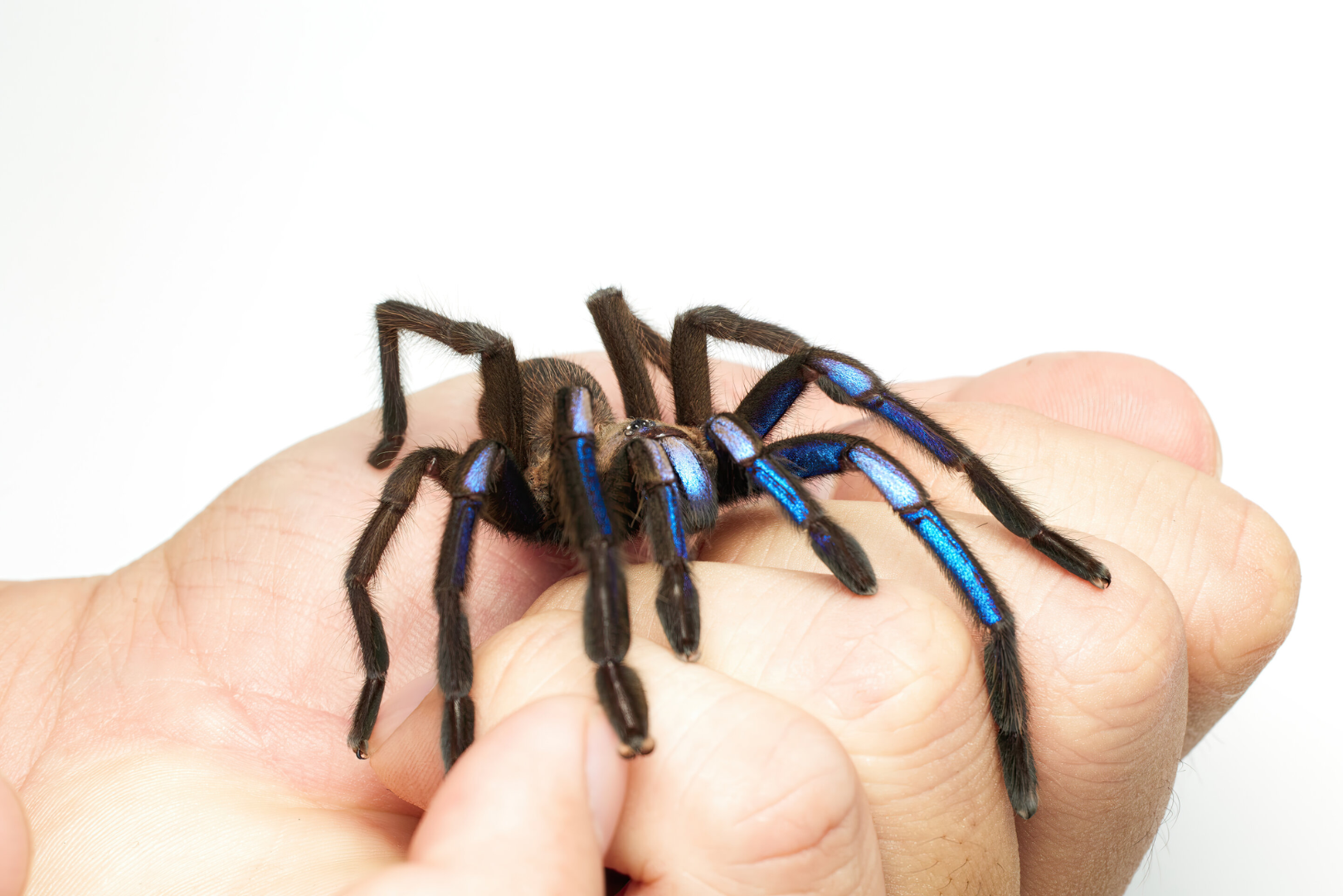A groundbreaking discovery was made in Thailand in 2022 when researchers stumbled upon a novel species of tarantula exhibiting an electrifying blue hue. Their prior find of the bamboo culm tarantula (Taksinus bambus), the first tarantula species known to inhabit bamboo stalks, inspired Dr. Narin Chomphuphuang and his team. Their subsequent expedition in the Phang-Nga province led to identifying this captivating electric blue tarantula species, marking a remarkable first for Thai mangrove forests.

The vibrant blue coloration of this tarantula is not attributed to conventional pigments but rather to the unique nanostructures within their hair, which manipulate light to create a striking blue appearance. The rarity of blue coloration in nature adds to the intrigue, as objects must absorb minimal energy while reflecting high-energy blue light to appear blue. Furthermore, this tarantula displays a remarkable iridescent effect, oscillating between blue and violet hues.
Previously known as the “Chilobrachys sp. Electric Blue Tarantula” in the commercial tarantula market, this species remained undocumented regarding its distinctive characteristics and natural habitat until now. The electric blue tarantula’s adaptability is notable, thriving in arboreal and terrestrial burrows within evergreen forests. However, in mangrove environments, they are confined to tree hollows due to tidal influences.
The scientific name Chilobrachys natanicharum was selected through an auction campaign, with proceeds dedicated to supporting the education of Lahu children in Thailand and impoverished cancer patients. This initiative is aimed at addressing the educational disparities faced by the Indigenous Lahu tribe and alleviating the financial burdens of cancer patients. The researchers emphasize the significance of taxonomy in preserving species and raise concerns about the potential unintentional contributions to mangrove deforestation, posing a critical question about the future of these unique creatures and their habitats.
In summary, the discovery of C. natanicharum showcases the mesmerizing world of structural coloration in animals, offers insights into the species’ adaptability, and highlights the importance of conservation efforts amidst threats to their natural habitat.
The team’s findings were published in Zoo Keys,
References
- Chomphuphuang, N., Sippawat, Z., Sriranan, P., Piyatrakulchai, P., & Songsangchote, C. (2023). A new electric-blue tarantula species of the genus Chilobrachys Karsh, 1892 from Thailand (Araneae, mygalomorphae, theraphosidae). ZooKeys, 1180, 105–128. https://doi.org/10.3897/zookeys.1180.106278
- Pensoft Publishers. (2023, September 21). Jewel of the forest: New electric blue tarantula species discovered in Thailand. Phys.Org. https://phys.org/news/2023-09-jewel-forest-electric-blue-tarantula.html











